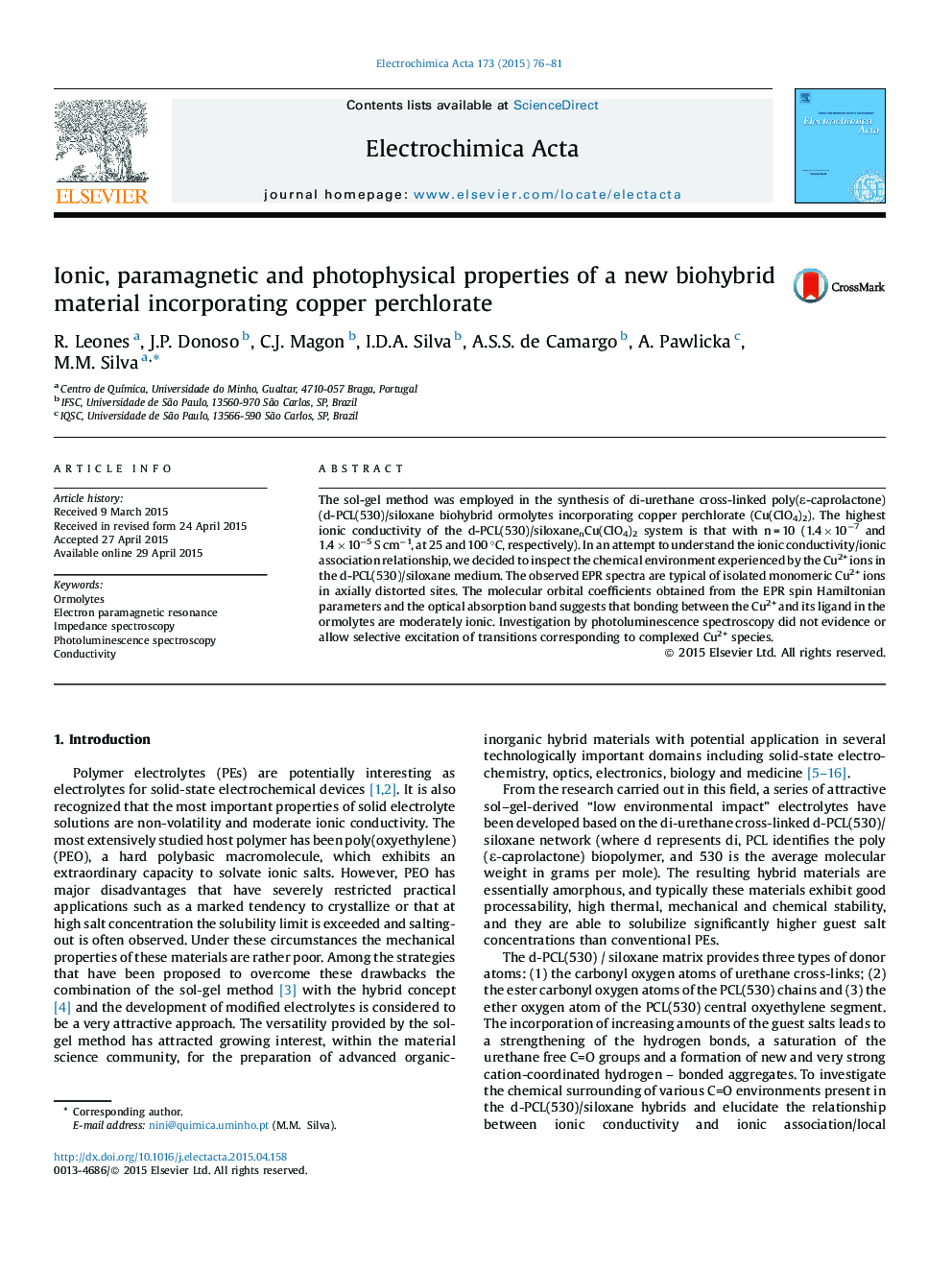| Article ID | Journal | Published Year | Pages | File Type |
|---|---|---|---|---|
| 183760 | Electrochimica Acta | 2015 | 6 Pages |
•Poly(ϵ-caprolactone)/siloxane biohybrids electrolytes were prepared by sol-gel method.•The polymer electrolytes were doped with copper perchlorate salt.•The ionic, paramagnetic and photophysical properties of the samples were evaluated.•The samples were analyzed by means of impedance spectroscopy, electron paramagnetic resonance (EPR) and photoluminescence spectroscopy.
The sol-gel method was employed in the synthesis of di-urethane cross-linked poly(ϵ-caprolactone) (d-PCL(530)/siloxane biohybrid ormolytes incorporating copper perchlorate (Cu(ClO4)2). The highest ionic conductivity of the d-PCL(530)/siloxanenCu(ClO4)2 system is that with n = 10 (1.4 × 10−7 and 1.4 × 10−5 S cm−1, at 25 and 100 °C, respectively). In an attempt to understand the ionic conductivity/ionic association relationship, we decided to inspect the chemical environment experienced by the Cu2+ ions in the d-PCL(530)/siloxane medium. The observed EPR spectra are typical of isolated monomeric Cu2+ ions in axially distorted sites. The molecular orbital coefficients obtained from the EPR spin Hamiltonian parameters and the optical absorption band suggests that bonding between the Cu2+ and its ligand in the ormolytes are moderately ionic. Investigation by photoluminescence spectroscopy did not evidence or allow selective excitation of transitions corresponding to complexed Cu2+ species.
Graphical abstractFigure optionsDownload full-size imageDownload as PowerPoint slide
